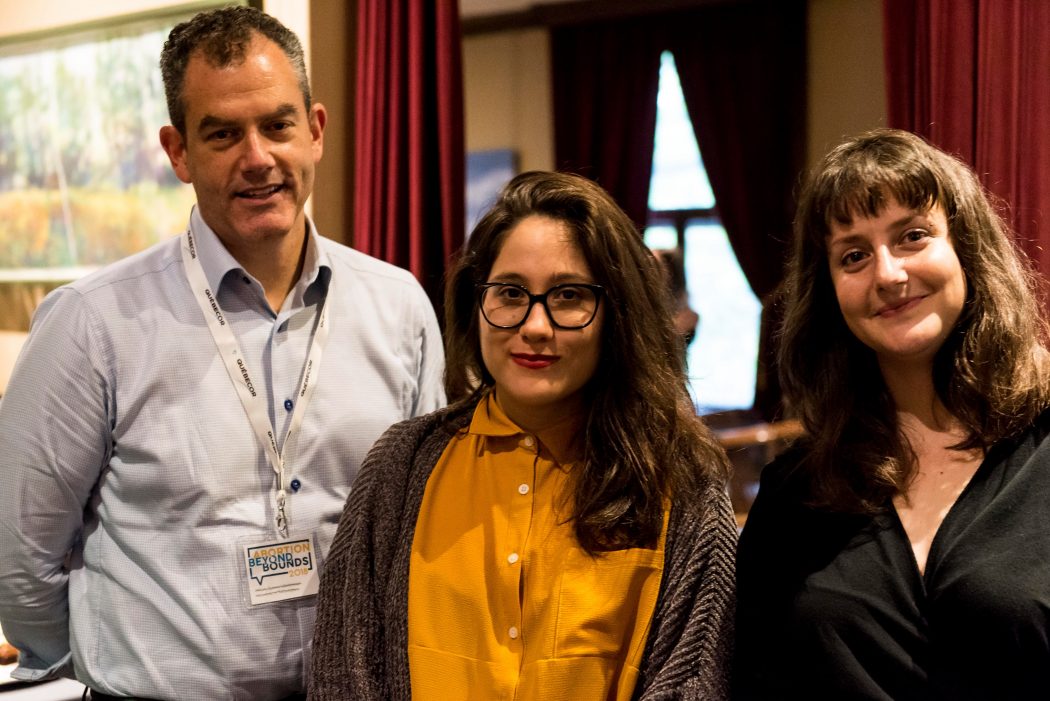From October 10 to October 12, the McGill “Abortion Beyond Bounds” conference took place at various locations across campus. The conference was a series of expert panels and discussions on abortion access and self-managed abortion (SMA), both in Canada and across the world.
The conference was a joint effort by students and professors at McGill, and some key coordinators included Dr. Alanna Thain, the Director of the Institute for Gender, Sexuality and Feminist studies; Professor Kelly Gordon, in the Department of Political Science whose research focuses on abortion rights and reproductive justice; Dr. Jennifer Fishman, an Associate Professor in bioethics and a researcher in reproductive health, and Rebecca Lewis, a post-doc working with Dr. Fishman.
Abortion was fully legalized in Canada in 1988, a little over ten years after the momentous Canadian Supreme Court Case decriminalizing abortion. The case involved Dr. Henry Morgentaler, who was criminally charged and imprisoned for performing over 5000 abortions, despite abortion being a crime. He challenged the illegality of abortion at the Supreme Court three times in 1975, 1988, and 1993, though he was unsuccessful in proving that the laws banning abortion violated the Canadian Bill of Rights.
In 1988, after the passing of the Canadian Charter of Rights, the Supreme Court ruling was yet again challenged by Morgentaler. In 1975 it was to violate section 7 of the Charter, which guarantees the right of all people, including women, to have security of the person (i.e. right to privacy and bodily autonomy), thereby legalizing abortion throughout Canada.
In 1993, Morgentaler also successfully challenged the provincial attempts to ban abortion clinics. However, today only about 17% of hospitals in Canada offer abortion services in a clinical setting.
McGill students were among the first to wrote about this topic, publishing popular handbooks on contraception almost twenty years before abortion was legalized in Canada. In 1967, the McGill Student Council gave seminars on contraception, opened a birth control clinic, and spread The Birth Control Handbook, long before birth control was even legal. Donna Cherniak, one of the original authors of the handbook, was also a speaker at the conference.
“Quebec is actually one of the best places in Canada, probably in the world, for abortion access, [but] there’s still a lot of misinformation,” noted Dr. Thain, “I think one of the things that we’ve seen is that abortion access isn’t a one time event; it’s linked to questions of education, sexual health, sexuality, and reproductive justice. It’s part of a whole life cycle of information and bodily autonomy, that I think everybody has a stake in.”
This comes into play when people think about how they discuss abortion and who they see as more likely to perform abortions, either in clinical settings, or in some cases at home, without professional medical care. This is referred to as SMA and is an attempt to terminate one’s own pregnancy outside of a clinical setting through various potentially harmful methods, including, but not limited to, taking medicine, herbs, or trying to physically remove the fetus.
The last event of the conference was a three-part panel that took place at Thomson House, entitled “The Stories We Tell: Research & Representation of Self-Managed Abortion.” It featured three experts on self-managed abortion, each of whom gave a presentation on their research into the subject.
The first person to speak was Dr. Dan Grossman, a professor in the Department of Obstetrics, Gynaecology, and Reproductive Sciences at the University of California, San Francisco. His presentation outlined his research into self-managed abortion attempts among U.S. women, featuring the results of a self-reported survey.
The survey showed that among women in Texas between the ages of 18 and 49, nearly 2% report attempting SMA, adding up to an estimated 100,000. Among the reasons for performing SMA, respondents referenced the high price of clinical expenses, that the clinic was too far away, or (as minors) that they lacked or did not feel comfortable requesting parental consent.
Although there is still a lot of uncertainty in terms of which demographics are more likely to perform SMA, Dr. Grossman’s survey showed that foreign-born women, as well as Black and Hispanic women who answered the survey in English, were more sometimes more likely to perform SMA. Additionally, women living in the Pacific coast and the west south central areas of the united states were at higher risk.
While data and statistics are highly informative about how SMA is performed, the last two presenters at the panel shared the experiences of individual women who have performed SMA in order to give a more well-rounded perspective about why it happens.
The second presenter was Nina Liss-Shultz, a journalist for Mother Jones magazine, who has written several influential articles on abortion access, including “Inside the Top-Secret Abortion Underground,” published earlier this spring. At the end of the panel discussion, in a Q&A period, several attendees expressed that they took issue with some extreme language used in Liss-Schultz’s articles, namely the drawing of parallels between abortion and the Underground Railway during slavery in the United States.
Liss-Schultz’s presentation focused on individual stories of people who had extreme difficulty gaining access to abortion, one of which chronicled the experience of an impoverished young woman, whom she called “Jocelyn”. Jocelyn grew up in Utah and had to travel over 170 miles when she was 17 years old in order to get to the nearest clinic where an abortion could be performed. She was told that she was too far into her pregnancy for it to be terminated due to a state law banning abortion after 20 weeks.
After hearing this, she unsuccessfully attempted suicide, tried to run away from home, and later, out of desperation, paid a man $150 to punch her in the stomach in order to terminate the pregnancy. It was unsuccessful, and she was later charged with solicitation of murder and sentenced to one month in prison, and then five years in juvenile detention. Jocelyn gave birth while handcuffed to her hospital bed, after which the baby was put up for adoption.
Liss-Schultz explained that this story, though seemingly extreme, is not uncommon as women are frequently imprisoned for attempts to end their pregnancies. She explained, “When people have fewer choices, they make more desperate decisions.”
The final presenter of the panel, Laia Abril, is an award-winning photojournalist who has had several exhibitions on various topics of gender and sexuality, such as eating disorders, menstruation, inter-sexuality, and asexuality. Her exhibitions have been featured at Musée de l’Elysée and Maison des Metalos, Paris; Centre de la Photographie, Geneva; Museum of Contemporary Art, Zagreband; and more. During her segment, she showed images and recordings from her installation entitled “A History of Misogyny: Chapter One: On Abortion,” which is currently featured at Maison Des Metalos.
Abril’s presentation included her one on one interviews with individuals who had attempted SMA, mostly in Latin America. She explained that her use of visual images, sound recordings, and video can be used as a way to educate people who might not be interested in the topic. She proposed that they can even be used to educate pro-life supporters, on the history of contraception and abortion.
All in all, the conference brought together about 150 people for discussion, education, and the sharing of information. The panel was intended to educate and raise awareness about the difficulties women face when trying to access abortion, as well as to shift perspectives about who is more likely to attempt an SMA.



A very interesting and knowledgeable report. Bravo!